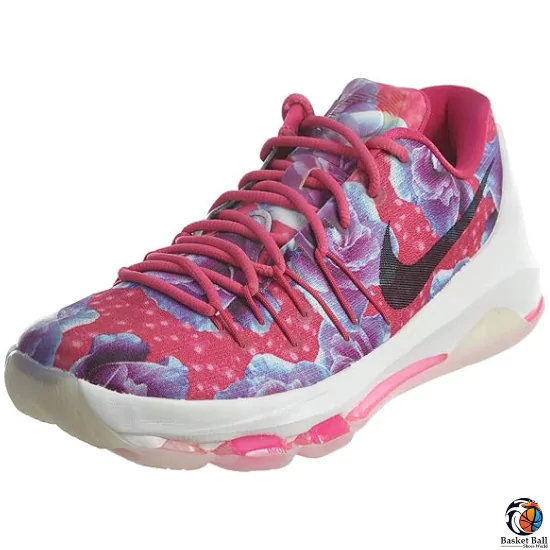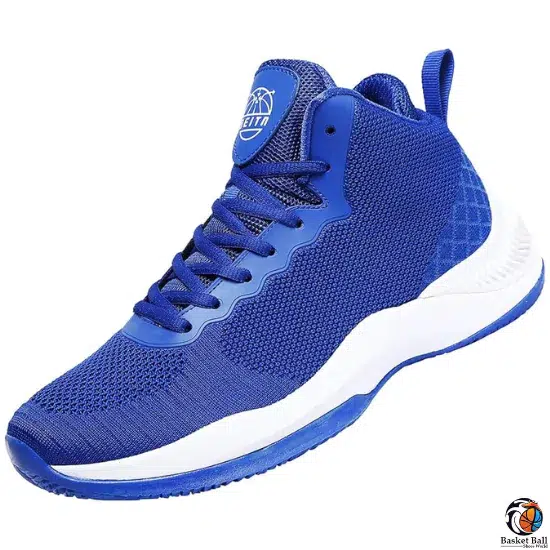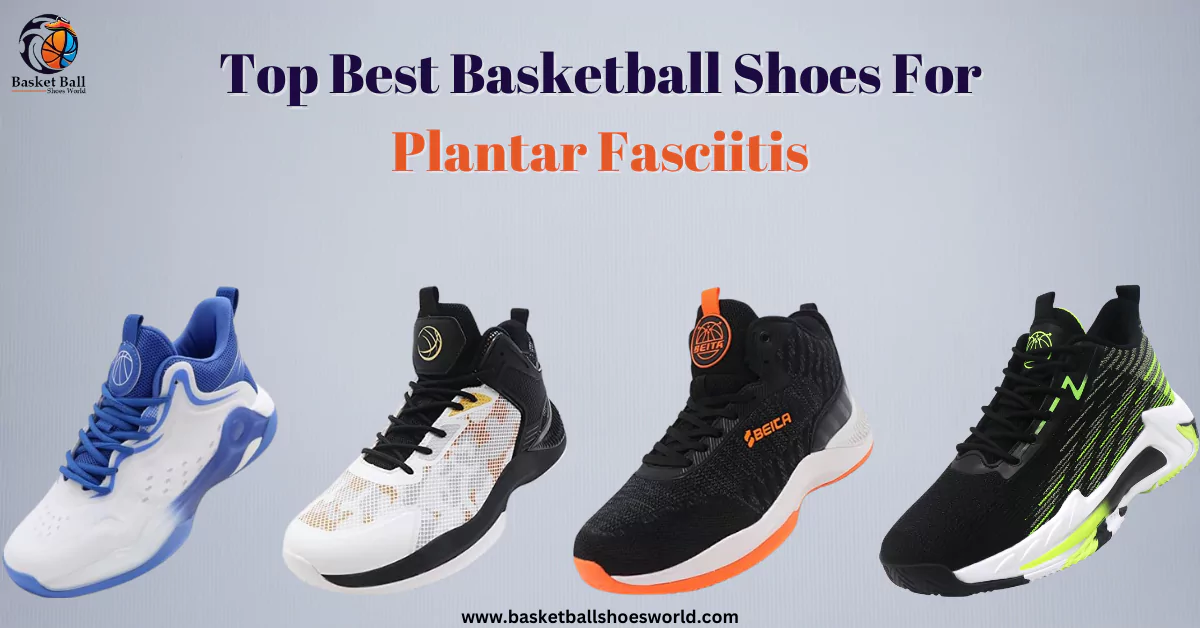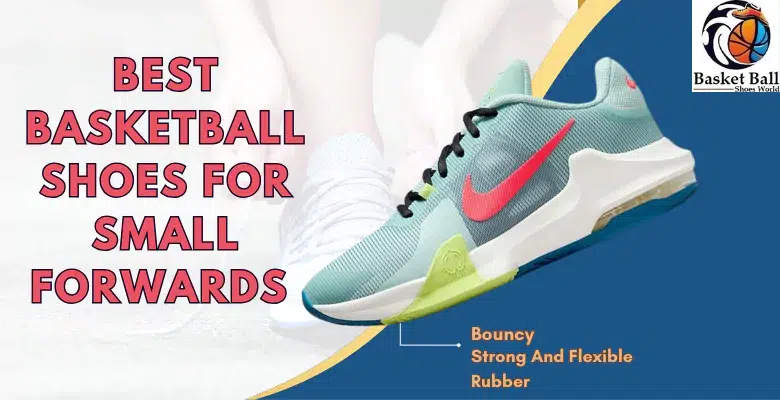I see athletes and clients regularly, especially basketball players who are injured in their feet. Plantar fasciitis is something that Marcus Camby, Joakim Noah, Pau Gasol, Joe Johnson, Ty Lawson, and Nenê have all dealt with before.
Painful plantar fasciitis can affect both non-athletes and athletes. Knowing what causes plantar fasciitis can help you avoid getting it and, if you already have it, hasten the healing process. In this article, I will go over what plantar fasciitis is, its causes, and recommended treatments. Go through this comprehensive guide for a better understanding of plantar Fasciitis.
Moreover, choosing the wrong shoes also causes painful plantar fasciitis. Most players don’t have an idea how to choose the right basketball shoes. Therefore, this article will also guide you in choosing the best basketball shoes for plantar fasciitis. Go through this comprehensive guide to better understand plantar fasciitis and the best basketball shoes to avoid this issue.
Table of Contents
What Is Plantar Fasciitis?

The thick band of tissue that supports the arch of the foot and joins the heel bone to the toes is called the plantar fascia. Additionally, it cushions the blow from specific exercises like sprinting, leaping, and walking.
What are the main causes of plantar fasciitis?

Comprehending the underlying causes of plantar fasciitis might aid in managing this discomforting foot ailment. An individual may have this illness for some reasons, from age to physical activity. Plantar fasciitis is frequently caused by physical activity that is performed without the right conditioning or support.
Running and jumping too much might tear the fascia tissue in the bottom of the heel, which can hurt and cause inflammation. Shoes that don’t have enough arch support or cushioning can also put a strain on the plantar fascia. Moreover, most of the players choose the wrong basketball shoes, which causes them to be victims of plantar fasciitis.
What Are the Symptoms of Plantar Fasciitis?

Have you experienced heel pain, particularly after a prolonged period of sitting or when you first wake up in the morning? Heel soreness, particularly on your first steps in the morning or after a long period of sitting, is one telling indicator. When you move, the pain may subside, but if you stand or sit for an extended period, it may return with vengeance.
But there’s still more. Plantar fasciitis in basketball players can also cause stiffness and soreness in the area closest to the heel of the foot. If that’s not enough, some fortunate people may even experience some swelling in the vicinity of the injury.
What are some of the risk factors for plantar fasciitis?

Although long-distance running and other endurance exercises put constant strain on the feet and are particularly linked to this ailment, according to MacNeill, the condition can affect anyone who spends a lot of time on their feet, especially if hard surfaces are involved. If you work as a cashier and stand on a tile floor all shift, for instance, your risk is higher than that of an office worker who spends the same amount of time mostly sitting down.
Foot mechanics:
According to MacNeill, having flat feet or extremely high arches might influence how your weight is distributed and place additional strain on your plantar fascia. If these are your arch types, it doesn’t imply you’ll always have foot problems, but you should make sure the shoes you choose offer the most support for your feet.
Ankle stiffness:
You run a higher risk if you have restricted ankle mobility, which can be brought on by either low ankle flexibility or tight calves.
Age:
People between the ages of 40 and 60 are most likely to have the disorder.
Weight:
Being obese or overweight puts extra strain on your feet, which can harm your arch.
Overtraining:
According to Carol Mack, D.P.T., C.S.C.S. of CLE Sports PT & Performance, excessive activity may be the cause of your recent increase in training, particularly if you’re a runner. Plantar fasciitis develops into an overuse ailment when an athlete overstrains and does not allow their feet adequate time to heal.
If the problem is not resolved, you may experience persistent foot pain that may also have an impact on your stride and body mechanics. This may cause other problems to arise, particularly in the form of knee, hip, back, or even neck troubles. The good news is that treatment is available, particularly if the illness is discovered early on.
plantar fasciitis treatments

Plantar fasciitis is typically treatable with over-the-counter (OTC) medications and at-home therapies. Your doctor will make recommendations for treating your condition and supporting your feet to lessen the likelihood that you’ll develop plantar fasciitis in the future. The most common treatments for plantar fasciitis include:
Over-the-counter NSAIDs:
NSAIDs, such as aspirin, ibuprofen, and naproxen, lower inflammation and pain. Never take NSAIDs without first consulting a healthcare professional for more than ten days in a row.
Rest:
If at all possible, refrain from engaging in the physical activity that triggered your plantar fasciitis for at least a week. This includes playing sports.
Icing your foot:
Twice a day, ice your foot for ten to fifteen minutes. To relieve soreness on the bottom of your foot, wrap a small towel around a frozen water bottle and roll it along your skin.
Choose the right and supportive shoes:
Put on robust, cushioned footwear. Wearing sandals, flip-flops, or other flat shoes without integrated arch support is not advised. Avoid going barefoot. Most importantly, it is a crucial step to avoid this issue. Make sure you choose the right shoes to avoid plantar fasciitis.
Orthotics or shoe inserts:
You can put insoles or orthotics on your shoes to provide additional arch support. Your provider will recommend custom orthotics that are molded to the precise shape of your foot, or pre-made inserts that you can purchase over-the-counter.
Immobilization:
For a few weeks, placing your foot in a walking boot, also known as a walking cast or pneumatic cam walker, will stabilize your foot and relieve strain on your plantar fascia. You’ll find out from your provider how long a boot is necessary for you.
Stretching and massage:
A physical therapist or your healthcare practitioner will demonstrate stretches and massage methods you can use on the muscles in your calves and feet.
Corticosteroids:
Corticosteroids are medications that reduce inflammation. Your physician may administer a corticosteroid injection into your plantar fascia, such as prednisone.
Platelet-rich plasma (PRP):
Injections of platelet-rich plasma (PRP) are typically used to treat and mend wounds.
Extracorporeal pulse activation technology (EPAT):
A type of shockwave therapy is called extracorporeal pulse activation technology or EPAT for short. To improve blood flow to your plantar fascia, your healthcare professional will use focused acoustic waves, often known as sound waves. It heals more quickly as a result of this.
Percutaneous needle tenotomy:
In this procedure, your physician will pierce your skin and insert a needle into your plantar fascia. The area receives more blood than usual from your body, which will encourage the plantar fascia to mend itself.
Plantar fasciitis surgery

To treat plantar fasciitis and ease your symptoms, the above-mentioned remedies are typically sufficient. Surgery is not often necessary. These are the following two most popular kinds of surgery:
Gastrocnemius recession:
To relieve strain on your plantar fascia, your surgeon will extend your calf muscles.
Plantar fascial release:
To release some of the excess tension, your surgeon will create small incisions (cuts) in your plantar fascia.
The kind of surgery required to treat plantar fasciitis will be discussed with you by your surgeon or healthcare professional.
How to Prevent Plantar Fasciitis

I have mentioned some tips below to avoid overusing your feet and prevent plantar fasciitis. Generally speaking:
- Stretch before and after a workout session.
- After strenuous activity or exercise, give your feet time to relax and recover.
- Put on supportive shoes.
- On hard surfaces, avoid wearing bare feet.
You will not be able to avoid plantar fasciitis if you have a medical condition that will increase the risk of you getting it.
Recovering From Plantar Fasciitis As a Basketball Player
Resuming basketball after plantar fasciitis requires patience and good time management to guarantee a full recovery. Recall that patience is essential. Resuming strenuous training or games too soon could result in further injury to oneself.
First, take a moment to rest your feet. Take a break from playing; rest is essential for mending. I can assure you that you won’t regret taking the time off.
This is your new best friend, physical therapy. You’ll receive stretches and exercises specifically designed to address plantar fasciitis from qualified experts. Boost your foot muscles’ strength and flexibility, and then allow the healing process to start.
Pain Management
Keep moving forward, despite the pain. To manage the symptoms, pick up some ibuprofen or other over-the-counter painkillers.
Nutrition for Recovery
Consume your way to a quick recovery. Consume a lot of fruits, vegetables, lean meats, whole grains, and omega-3 fatty acids to reduce inflammation. Your health will appreciate it.
Gradual Return to Activity
It’s time to resume playing but go slowly. Begin with low-impact exercises like cycling or swimming, and then return to basketball gradually. Give attention to your body and take your time.
Mental Health During Recovery
Don’t disregard your mental well-being. If you’re experiencing emotional exhaustion, you should think about speaking with a sports psychologist. Injuries can be depressing.
How to select shoes for plantar fasciitis?

Cushioning
Absorbing shocks requires cushioning. It lessens the force on your knees, ankles, and feet by blunting impacts. Well-made shoes frequently include energy-returning cushioning, which helps you jump higher and run faster. Air, gel, and foam are frequently used as cushioning materials in basketball shoes.
Support
Because basketball is such a high-impact activity, athletes are more likely to suffer ankle injuries. Extra stability is provided by basketball sneakers with robust support in the ankles and arches. This improves performance by providing leverage and balance, in addition to reducing the risk of injury
Traction
You can stop and make fast cuts without slipping when you have traction. For optimal traction, basketball shoes usually include gripping soles with a hexagonal or herringbone pattern on the outsole. By distributing pressure and weight uniformly, these designs lessen the chance of slipping. Think about if you’ll play basketball indoors or outside before purchasing a pair of shoes. While shoes made for indoor play have shorter treads that grab hardwood courts, shoes made for outdoor play typically have deeper tread patterns to increase traction on tarmac.
Breathability
Breathability is crucial since sweaty, overheated shoes can lead to blisters, sore feet, and even athlete’s feet. Breathable shoes keep your feet dry and cool, which enhances comfort and lowers the possibility of these problems.
Lightweight Construction
Because basketball has a strong emphasis on agility, speed, endurance, and jumping, lightweight footwear is crucial. Your momentum will be greatly reduced and your jumps will be dragged down if you wear heavy shoes. Throughout a game, wearing heavy shoes can also make you more tired. Lightweight basketball shoes will enable you to jump higher, cut and pivot more quickly, and maintain your momentum for longer.
Best Basketball Shoes for Plantar Fasciitis
I have selected the top 5 basketball shoes for plantar fasciitis below. Let’s have a look at them:

Nike Men’s Kd 8
Nike’s men’s KD 8 basketball shoes take second place. Those who have plantar fasciitis will benefit greatly from these shoes. They are woven using renowned Nike fly-weave technology and are composed of a special fabric that resembles plastic.
Plastic strands and fabric make up the upper portion, which gives the feet the necessary strength and support. To lessen the compressional forces on the heel and allow you to tolerate plantar fasciitis, the heel area is sufficiently cushioned.
They adequately cushion and pad the necessary parts of the feet to offer the entire foot the protection and comfort it needs. Zoom Air technology supports the cushioning, making these sneakers highly breathable and supportive for feet with plantar fasciitis problems. With the zoom air cushioning, the midsole and back part are kept apart, allowing the player to move freely and execute tricks with ease.
The rubber sole keeps the player from slipping and toppling over while providing the necessary traction and grip on the court. This shoe’s steadiness is a direct result of its high-quality rubber sole. They come in a variety of colors. This shoe looks good on the foot and is deemed appealing by players.
- Unmatched cushioning relieves pressure points down to the feet.
- It is comfy and breathable, thanks to Air Zoom technology.
- Good traction is provided by the rubber sole.
- They are really helpful and accommodating.
- They are made durable with plastic threads and cloth.
- Getting in the first few times is a challenge.
- Although the construction is rigid overall, this does not affect the player’s performance.

Adidas Crazylight Basketball Shoe
For plantar fasciitis, Adidas Crazylight Boost is the best option. This basketball shoe is strong and lightweight. For athletes experiencing plantar fasciitis, it’s a great purchase. The deep 3-D heel model is a particular purpose enhancement to this shoe designed to protect the plantar fasciitis-affected heel. To get to the heel, this structure increases stability and absorbs shocks.
The heel was perfectly designed to lessen the players’ heel stress thanks to weight optimization procedures. This quality is necessary to treat plantar fasciitis. With these lightweight basketball shoes on their feet, the player may move freely because they are incredibly supportive and responsive.
There is noticeable cushioning in a crazy light boost. It provides the heel and forefoot with the right amount of comfort. Additionally impressive is the arch support. Players’ control over their foot motions and sheer traction on the court are attributed to the sleek lining and rubber soles of their shoes. The high-quality traction reduces the chance of slipping and rolling while performing stunts.
These shoes have a medium cut and offer moderate protection to the ankle area. They are wearable and appealing because they come in a variety of color combinations. If you are getting them online, order a size smaller than the normal size because they are made in a way that makes them feel a little broader than the standard fitting.
- They are incredibly stable and light.
- The cushioning is excellent.
- The heel is adequately protected from shocks by the 3-D deep heel model.
- For players with flat feet, the highly supportive midsole improves arch support performance.
- Given that the feet are somewhat wider than the typical sizes, it can be challenging to get a good fit.
- The additional support may cause the heel area to feel stiff.

Beita Mens Basketball Shoes – Anti-Slip
The Beita Men’s Basketball Shoes are an excellent choice in case you suffer from plantar fasciitis. These shoes’ well-known anti-slip qualities provide you with the necessary stability when playing on the court. The rubber soles offer better traction thanks to their unique anti-skid pattern, which lowers the possibility of slips and falls.
Furthermore, the shoes’ removal of all weight reduces foot pain and allows for quick movement when playing. The uppers of these shoes are made of robust synthetic leather and airy mesh, which provides breathability and durability. This combination ensures that your feet stay comfortable and dry even during active play.
The shoes also include a shock-absorbing midsole that cushions your feet further and reduces impact. This helps those with plantar fasciitis in particular by reducing the strain on the arch and heel of the foot. The Beita Men’s Basketball Shoes offer superior comfort, support, and stability for sportsmen suffering from plantar fasciitis.
- They are durable
- They are wear-resistant
- Anti-slip material is used
- They look Attractive
- Lack of ankle support

Adidas Harden Vol. 2
The shoes are very light and responsive. The incredible ventilation mechanism in these sneakers prevents the interior temperature from rising above a pleasant level. Due to its many width options, the sneakers are versatile basketball shoes that are accessible for players with large feet. The upper of this shoe is made of forging fiber-supported TPU-coded thread.
This combination makes it sturdy and long-lasting. The Adidas three stripes and TPU technologies provide the player’s feet with a great deal of lateral support. It effectively removes dust, has good traction, and offers a firm grasp on the court. The traction is equally good on dusty courts, and a quick brushing will remove any remaining dust from the sole patterns.
- The feet experience less stress thanks to soft padding.
- It has excellent traction.
- The Three Stripes and TPU technology give foot lateral support.
- They are robust and lightweight.
- After three or four dusty court games in a row, they needed special care to get rid of the dust particles.
- The heel could feel a little tight.

Orthofeet Coral Stretch Knit Shoe
In addition to being stylish, Orthofeet Coral Stretch shoes are comfy, breathable, and stretchable. These sneakers have lower built-in arch support (for flat feet or neutral arches) instead of a single fixed degree of support. During the testing phase, one of our editors, who suffers from plantar fasciitis, did not feel any symptoms, and she noted that the shoes offered excellent support and cushioning. We adore these sneakers’ adaptability as well.
They are supportive enough to use on lengthy runs or treks, yet also fashionable enough for daily wear. There are some adorable hues to choose from in addition to more conventional choices like white or black. Standard, wide, and extra-wide sizes are available for the shoes. You won’t be let down if all-day comfort and a hint of flair are what you’re after. Orthofeet offers free shipping, returns, and exchanges on any items bought on their website, along with a 60-day money-back guarantee if you’re not happy with the shoes.
- The feet experience less stress thanks to soft padding.
- Ideal degree of comfort
- Breathable and lightweight
- Sizes exclusively available for ladies
Conclusion
Basketball players are susceptible to plantar fasciitis, a painful and sometimes disabling ailment. Players who want to succeed in this sport need to put foot health first and take precautions against and treat plantar fasciitis. Players can return to the court pain-free and at the top of their game with the aid of prompt intervention, appropriate footwear, and a regimen of stretching, strengthening exercises, and rest.
Additionally, from the above-mentioned top shoes for plantar fasciitis, I have used two of them, which I think are the best among them. The first one is Nike Men’s Kd 8 and the second one is the Adidas Crazylight Basketball Shoe. Both shoes suit best for plantar fasciitis, as per my experience. Therefore, I suggest you go with these shoes to get rid of plantar fasciitis issues.
FAQs
The inflammation of the plantar fascia, a tissue in the foot utilized for walking and other foot motions, is known as plantar fasciitis. Numerous factors, such as shoe type, foot shape, overuse, and walking surface kinds, can lead to plantar fasciitis. Heel pain is the primary sign of plantar fasciitis.
Plantar fasciitis is something that Marcus Camby, Joakim Noah, Pau Gasol, Joe Johnson, Ty Lawson, and Nenê have all dealt with before. Painful plantar fasciitis can affect both non-athletes and athletes.
Plantar fasciitis is a frequent condition that can develop in basketball players with poor foot shape, such as flat feet or pronation difficulties. The plantar fascia attaches to the heel and travels along the foot’s sole. An inflammatory response to this band of tissue will result in heel discomfort.






